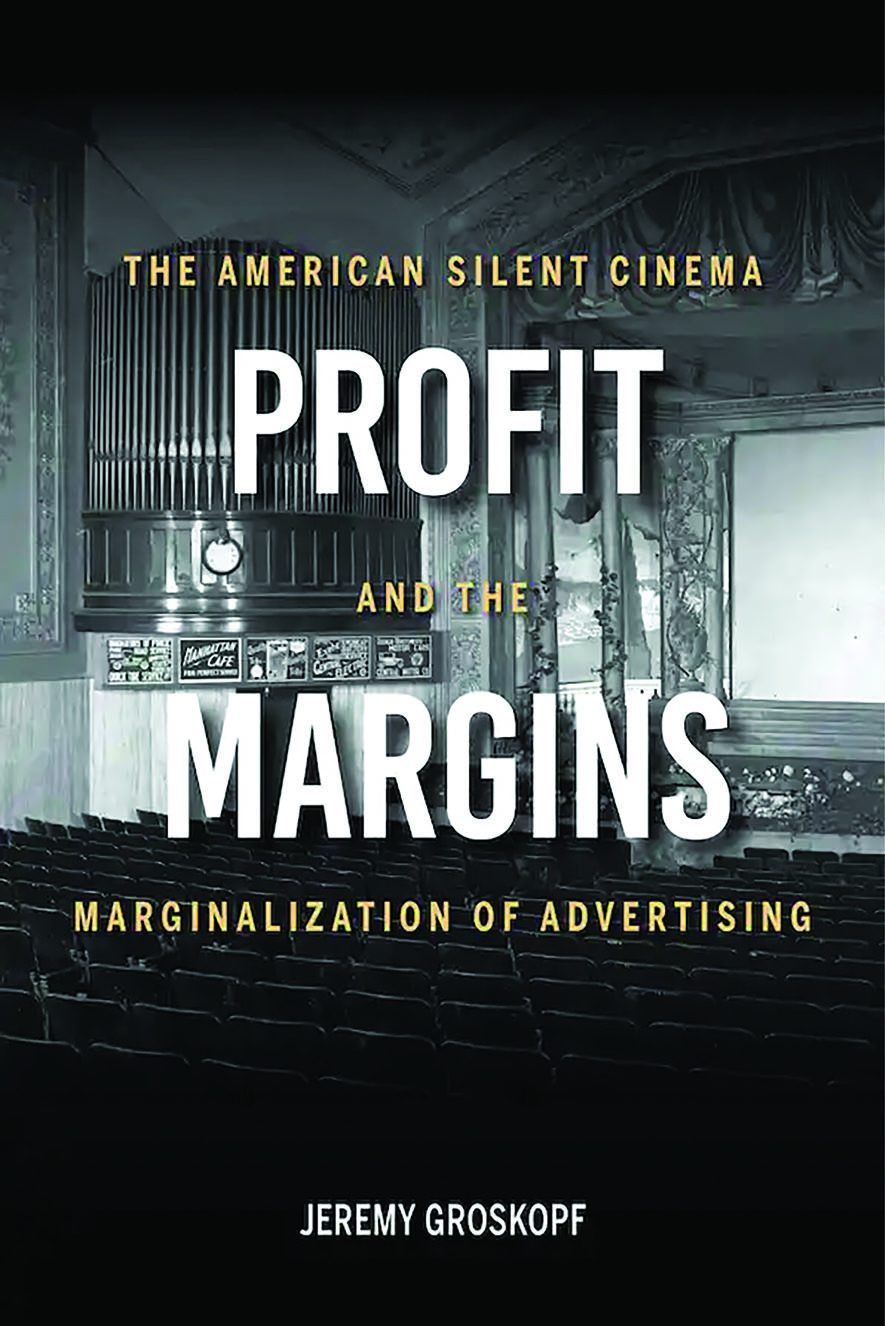In the early 21st-century United States, no revenue stream has excited capital more than advertising. Aside from Apple, which sells the devices marketers beam advertisements to, the next two largest corporations by market capitalization in Silicon Valley, Google and Facebook, make almost all of their profits through advertising. Much has been written about the success of these companies, and of the free platforms they run like Gmail, YouTube, and Instagram, in monetizing user attention. At this point most are familiar with the truism that, if you aren’t paying for a given internet service, then you aren’t really the customer—you’re the product. Or, to be a little more precise, the product is your attention, measured through your clicks, your time spent per page, your scrolling speed, or other forms of “engagement” you might provide. These are novel developments, to be sure. But are they without precedent? Jeremy Groskopf’s authoritative and accomplished new study Profit Margins: The American Silent Cinema and the Marginalization of Advertising shows us that precedent can be found not in television, or even in the earlier broadcast era of the radio, but in early cinemas.
With careful sifting of fragmentary source material, Groskopf reconstructs a detailed account of cinema advertisers as innovators of early forms of the interstitial advertising spot, of advertiser-funded moving images, and even of the webpage banner ad. These are perhaps fun origins to trace, but for most scholars the most valuable insights come in Groskopf’s account of the debates about audience receptivity and attention. Advertisers, exhibitors, and industry leaders all provided sometimes overlapping and sometimes competing accounts of how audience attention functioned and of what cinema audiences would “tolerate” when seeing a film. It is this early receptivity theorizing, dating to over a century ago, that demonstrates that the earliest technologies of mass moving images helped introduce and spread the question of attention—how it worked, how it might be manipulated, and who stood to profit from it—long before interactive computers or even over-the-air media arrived.
When it comes to speaking to outside disciplines, film historians have often gone it alone. Histories of motion pictures, far more than those of technologies like television, social media, or even radio, have tended to remain siloed in their debates. This has not solely been the fault of film history as a field—neighbor disciplines, from economics to technology studies to history itself, have tended to ignore cinema’s immense impact on so many aspects of 20th- century life. It is perhaps unsurprising, then, that the history of advertising has also largely left cinema out. Profit Margins corrects this missing piece of film history and advertising history both. At the same time, it provides an authoritative account of the role played by advertising in the broader struggles over the changing medium of cinema in the silent era. Profit Margins argues that experiments in cinema advertising flourished and multiplied during the period of cinema’s rapid rise as a medium. And further, it contends that attending to the history of these advertising experiments reveals that the eventual stable form taken by cinema—a largely advertising-free medium that audiences paid to view—was far from assured during the silent era. Rather, this form had to be brought into being by a nascent industry. While other scholars have shown how the motion picture became a more middle-class entertainment through the concerted effort of the film industry, Groskopf demonstrates how important struggles over advertising were to that transformation.
Limiting itself to the early, formative years of the film industry, Profit Margins is organized by advertising technique. Each successive chapter introduces a novel technique, provides an historical overview of its uses, and provides case studies of specific firms that specialized in that technique. These different advertising forms emerged roughly chronologically, with significant overlap. Beginning with advertising slides, Groskopf then introduces readers to trailers, peripheral advertising (on theater walls or around the screen), and forms of free cinema admission subsidized through advertising.
The first major advertising form arose out of the basic technological limitations of early cinema. Shows had a built-in pause when operators needed to change reels, and audiences needed entertaining during this forced break in the entertainment. Earliest were the “song slides,” which invited sing-alongs of songs during reel changes that doubled as advertisements for sheet music publishers, and other forms of advertising soon followed. Wading through a decade of industry trade press, Groskopf traces the rapid proliferation of advertising slides in the 1910s and the intense backlash from industry leaders that attended their sudden emergence. Appeals for the value of slides to the advertiser hinged on the idea of “captivity,” that audiences had nowhere else to look but at the screen. Those opposed to slide advertising agreed that the audience was stuck looking at screen advertising but disagreed that viewers were happy about it. While moviegoers might be captive, detractors contended, they were not passive: Their eyes could wander, and their minds could turn against the movie theater as a place of pleasure entirely. Boredom, annoyance, and impatience might keep audiences from coming back for more at a time when the medium was still novel. Soon, advertising slides began falling out of fashion. Groskopf argues, somewhat persuasively, that the most likely reason wasn’t to do with cinema slides (which survived until the 21st century in some form) as a medium per se, but with a price war that drove the quality of slides down until they were unpleasant to look at.
With slides becoming less popular, a new set of firms emerged to argue that animated advertisements would bring audiences the pleasure that slides lacked. As with slides, Groskopf carefully reconstructs the arguments for and against trailer advertising as it became more widespread. Groskopf delicately connects advocacy for trailers to the decline of slides, showing how trailer makers used the same theories of active audiences to suggest that the key to making advertising palatable was to make it move and thus delight. Through a case study of the largest trailer maker, Alexander Film Company, Groskopf also uncovers the earliest attempts at national space brokerage for advertising in theaters, with Alexander briefly able to sell space in local theaters across multiple regions.
The most open and vigorous debates about the passivity and attentional capacity of movie audiences occurred not with onscreen advertising but with what Groskopf categorizes as “peripheral” ads—everything from ads framing the film screen to posters on theater walls to light fixtures with embedded advertising to clocks with cycling advertising. As Groskopf shows, the question of where audiences will and won’t look, and of whether they would passively tolerate or actively reject these other advertising forms, drove the debates over peripheral ads. In this saga we can observe the primordial origins of the widespread criticisms of many forms of web advertising, especially the ubiquitous banner ad. The book concludes with a study of attempts to create advertiser-sponsored free film showings. These took disparate forms, including outdoor theaters, free matinees sponsored by local retailers, and redemption schemes. Groskopf argues that no strategy drew more ire from the film industry, worried about the devaluation of its product, and from the state, worried about the consequences of free movies to public safety and health.
The book is a clear demonstration of the immense value of the wave of newly digitized, searchable historic film periodicals. They constitute the book’s main source of information, and Groskopf carefully and sensitively puts them to use in reconstructing the stories of whole companies that likely leave behind almost no other traces of their often short existences. Still, Groskopf is also clear on the limitations, familiar to any film scholar, of these fragmented archives. His case study approach fits his source limitations well, allowing him to more closely attend to the limited examples for which he can draw on other kinds of manuscript and correspondence records.
Still, by moving case-by-case rather than building a chronological narrative, Groskopf leaves some key questions unanswered. What did all these attention debates mean to and for the broader public? What did they mean for the politics of cinema? For politics more broadly? How did the debates and struggles over film advertising relate to the ongoing debates over the persuasive power (or, otherwise put, the propaganda power) of cinema? And is it possible that cinema advertising shaped the political economy of the entire country? Profit Margins provides some tantalizing clues, ready to be further explored. As Groskopf acknowledges, the United States federal government’s World War I propaganda efforts dominated then-existing cinema advertising channels. The federal government’s war propaganda arm, the Committee on Public Information, at once required exhibitors to show government-sponsored advertising and acted as a subsidizer of the nascent cinema advertising industry, slide-makers and trailer-makers both. Of special significance was the advertising for Liberty Loans, the bonds ordinary Americans could buy to help fund the war effort. The committee disseminated 100,000 slides for just the first two Liberty Loans, and Groskopf largely attributes the swelling popularity (and audience acceptance) of trailers to the committee’s distribution of tens of thousands of prints of Liberty Loan trailers, calling their circulation the form’s “watershed.”1 Liberty Loans were undeniably successful, from multiple standpoints—as Julia Ott2 has shown, they introduced the majority of Americans to the practice of investment for the first time. They also, perhaps, deserve credit for introducing millions of Americans to the advertising spot for the first time, an advertising form that’s proven as durable as any across the history of the moving image. Had Groskopf followed a chronological narrative, the obvious salience of the Liberty Loans to the evolution of advertising might have loomed too large to not investigate.
This missed opportunity hardly takes away from the many achievements of Profit Margins, a book that should prove useful not only to film historians and advertising historians but to any scholar interested in the larger history of debates over how visual technologies can manipulate, isolate, reveal, and, of course, monetize our attention.
Notes
- Jeremy Groskopf, Profit Margins: The American Silent Cinema and the Marginalization of Advertising (Bloomington: Indiana University Press, 2021), 127. ⮭
- Julia Ott, When Wall Street Met Main Street: The Quest for an Investors’ Democracy (Cambridge, MA: Harvard University Press, 2011). ⮭
Emmet von Stackelberg is a doctoral candidate in History at Rutgers University–New Brunswick.


